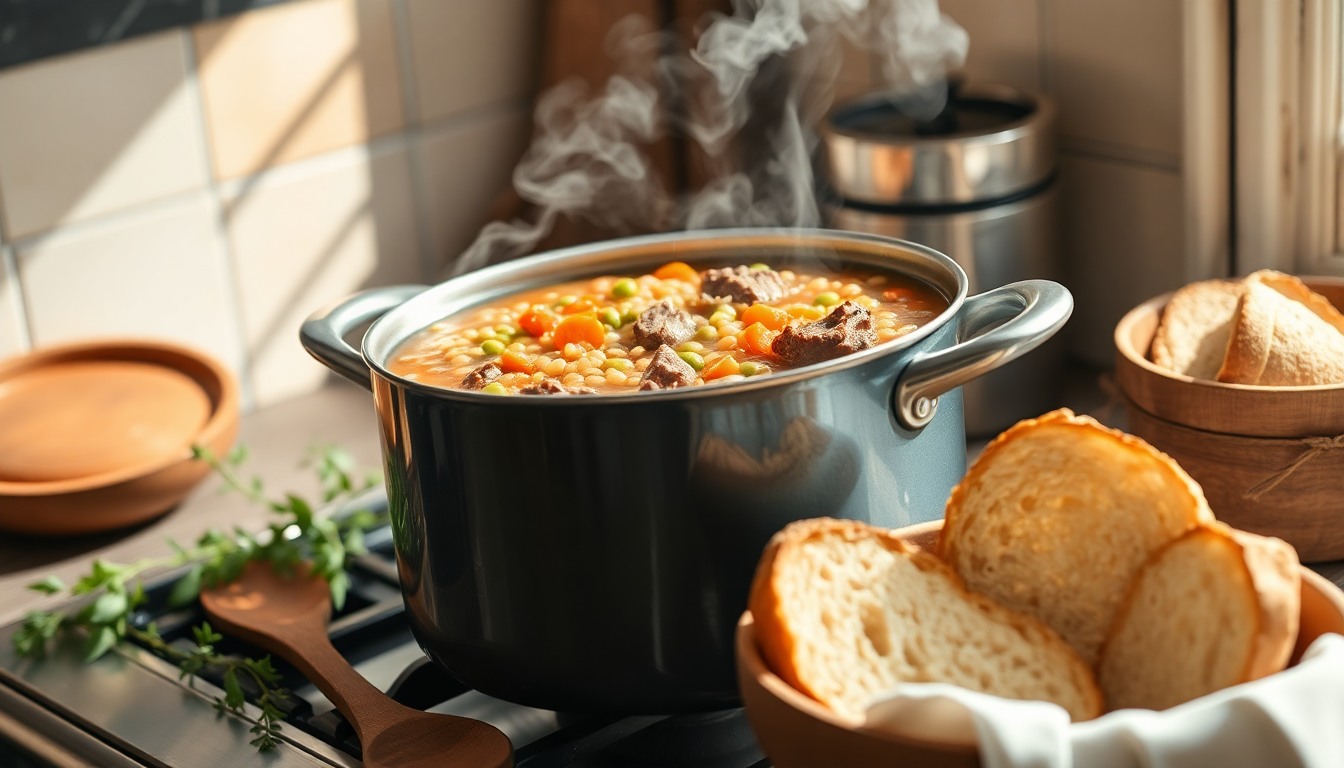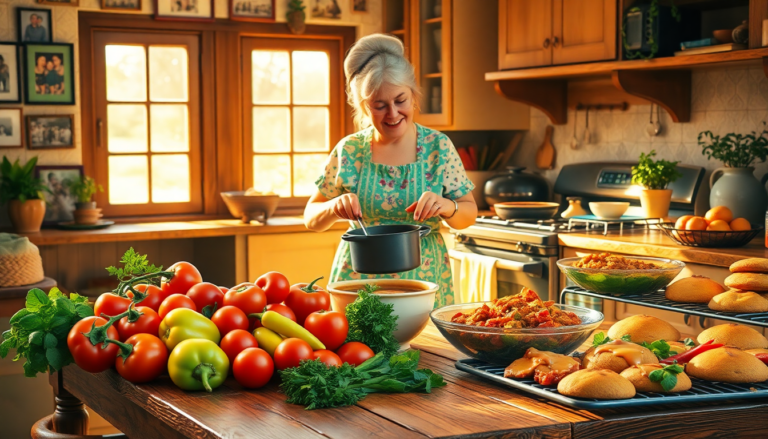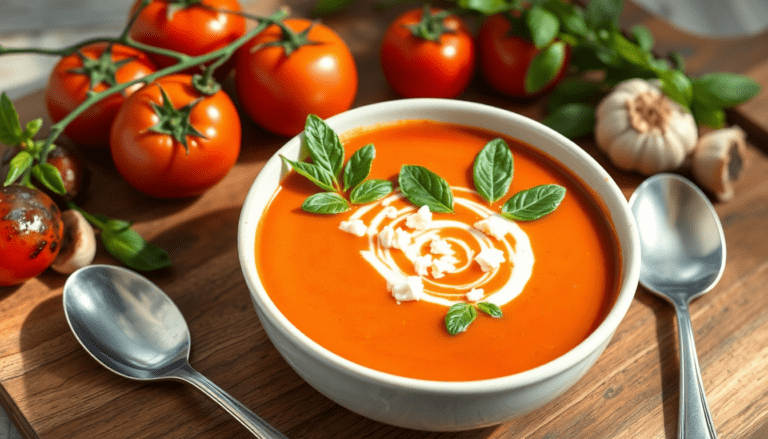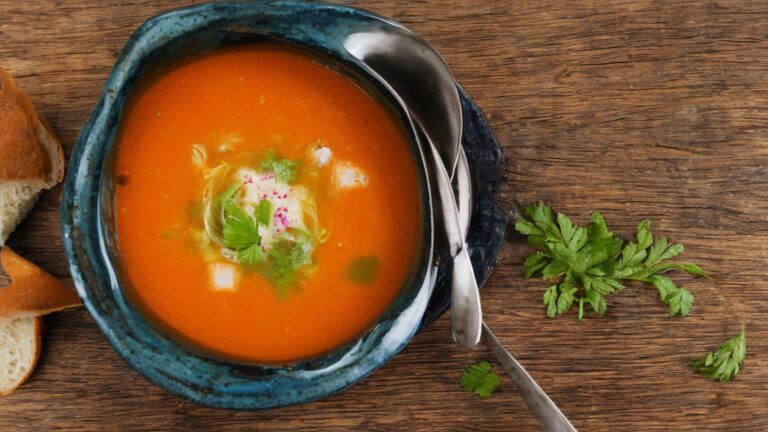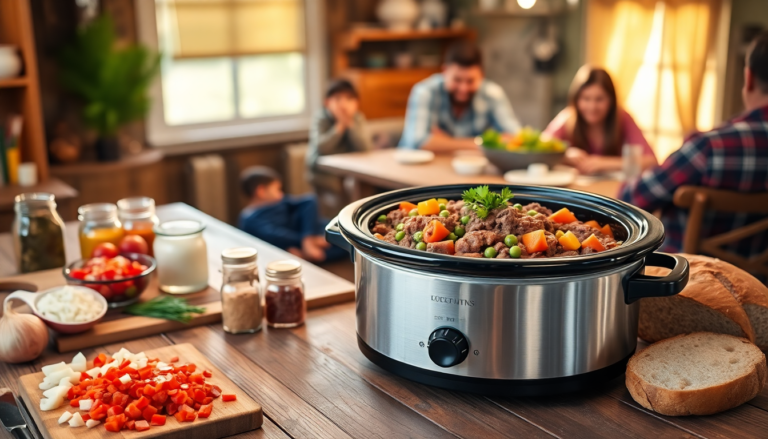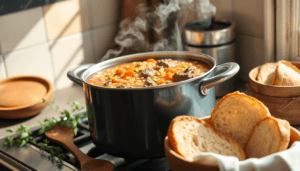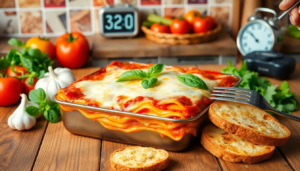Hearty Beef and Barley Soup: 5 Secrets for Ultimate Flavor
Introduction
Are you ready to elevate your beef and barley soup game? This comforting dish is a beloved classic, perfect for chilly days and family gatherings. By implementing a few simple secrets, you can enhance the flavors and textures of your beef and barley soup, creating a meal that everyone will rave about. Here are five secrets that will take your hearty soup to the next level:
-
Use Quality Ingredients: Start with high-quality beef. Opt for cuts like chuck roast or brisket, which become tender and flavorful during the slow cooking process. Fresh, organic vegetables and good-quality barley will also significantly improve the taste. For some great beef options, check out our ultimate guide to the best slow-cooked beef stew and delicious beef stew recipes. You can also learn more about barley and its nutritional benefits.
-
Brown the Beef: Taking the time to sear the beef before adding it to your soup can dramatically enhance the flavor. This step caramelizes the meat, adding depth and richness to your beef and barley soup.
-
Add Aromatics: Don't underestimate the power of aromatics. Onions, garlic, and celery not only build a base of flavor but also contribute to the overall aroma that makes your kitchen smell divine. Discover more flavorful techniques with our mouthwatering braised beef short ribs recipe for additional inspiration.
-
Choose the Right Broth: The broth is the heart of any soup. For a robust beef and barley soup, consider using homemade beef broth or stock, as it provides a richer taste and better nutrition than most store-bought varieties. Explore the process of making your own broth on Wikipedia.
-
Incorporate Fresh Herbs: Fresh herbs like thyme, parsley, or bay leaves add a burst of freshness to your beef and barley soup. Add them during the last 30 minutes of cooking for the best flavor. Learn more about perfecting your broths with our delicious homemade chicken broth recipe.
By following these five secrets, you'll transform your traditional beef and barley soup into an exquisite dish that not only warms the body but also delights the palate. Enjoy crafting this delicious meal!
The Importance of Quality Ingredients
Using high-quality ingredients is essential for creating a delicious bowl of beef and barley soup. The flavors of this hearty dish come alive when you select the best components, elevating the overall taste and nutrition of your meal.
When it comes to the beef, opting for cuts like chuck or brisket can provide a rich flavor and tender texture. Here's why quality matters:
- Flavor: High-quality beef offers depth and richness that enhances the soup's overall profile. It absorbs the savory broth and melds beautifully with other ingredients. For inspiration on how to prepare beef, check out our ultimate guide to the best slow-cooked beef stew. You can also learn more about the different types of beef cuts from Wikipedia's beef article.
- Texture: Fresh cuts result in tender meat that won't break down into mush during cooking. This ensures that each bite of your beef and barley soup is satisfying. Want to try a new technique? Explore our mouthwatering braised beef short ribs recipe.
Fresh vegetables also play a vital role in this dish. Consider using:
- Carrots: Sweet and vibrant, they add a natural sweetness to balance the savory notes.
- Celery: Provides a subtle crunch and aromatic qualities that uplift the entire soup.
- Onions: Essential for a flavorful base, they bring warmth and depth. Our delicious onion soup recipe highlights the importance of onions in cooking. You can find more information about onions in Wikipedia's onion article.
Additionally, don’t forget about the barley. Using whole grain barley not only contributes to the soup’s heartiness but also adds nutrients, making your beef and barley soup not just delicious but nourishing.
In summary, investing in high-quality beef and fresh vegetables will dramatically enhance the flavor and texture of your beef and barley soup, resulting in a comforting dish that warms both body and soul.
Secret #1: The Right Cut of Beef
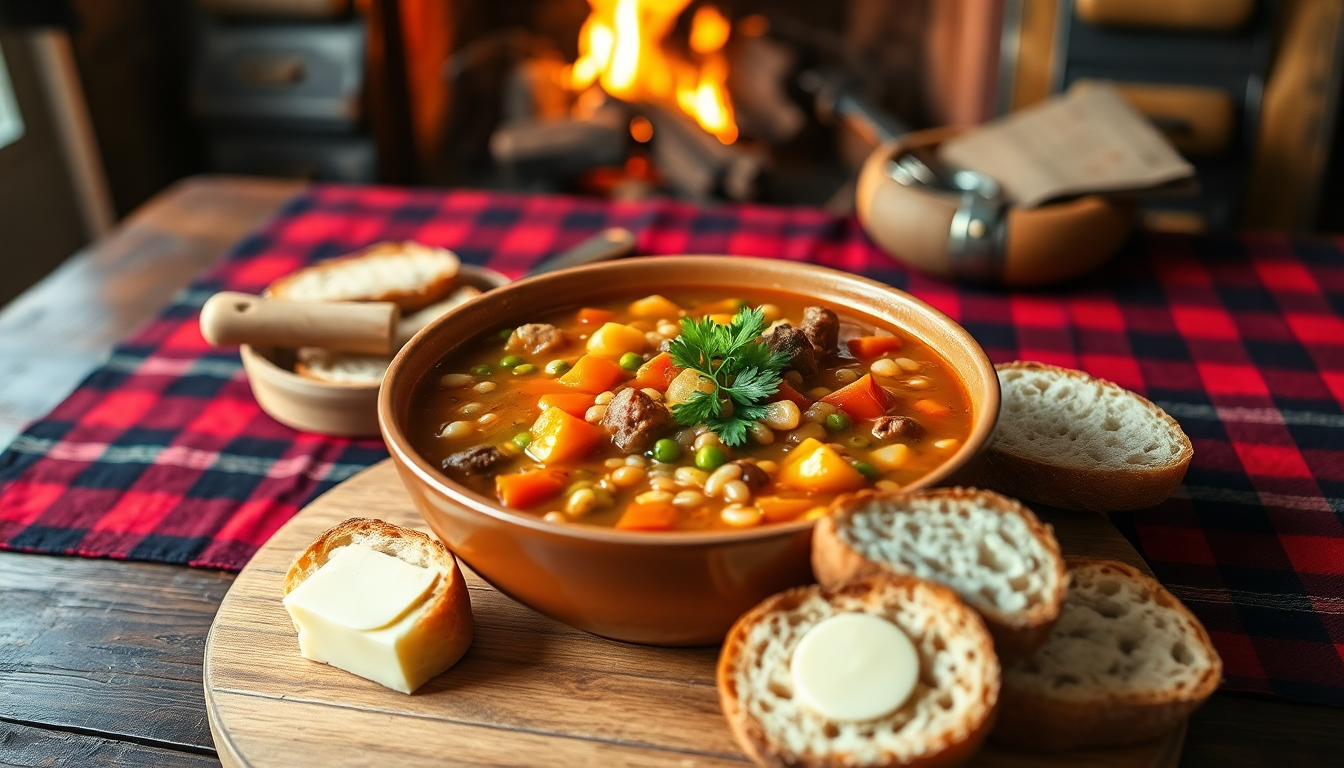
When it comes to crafting the perfect beef and barley soup, selecting the right cut of beef is crucial for achieving optimal tenderness and flavor. Here are some of the best cuts to use:
-
Chuck Roast: Known for its rich marbling, chuck roast becomes incredibly tender when simmered. It adds a deep, beefy flavor to your soup, enhancing every spoonful.
-
Brisket: This cut is packed with flavor and becomes melt-in-your-mouth tender after slow cooking. Brisket also contributes a satisfying texture to the beef and barley soup. Check out our ultimate beef stew recipe for more tips! You can learn more about brisket on Wikipedia.
-
Round Roast: A leaner option, round roast still delivers great taste but is best when cooked with a bit more liquid to ensure it stays moist.
-
Shank: This cut includes a nice bone that adds depth to the broth. Shank meat is full of collagen, which breaks down during cooking to create a rich base for your soup. For another hearty option, try our hearty beef barley soup recipe! For more information on beef cuts, check out this page.
By choosing one of these cuts, you’ll infuse your beef and barley soup with incredible flavor and a satisfying texture. Remember to trim any excess fat, as this can make the broth greasy. With the right cut, your soup will become a beloved family favorite! Don't forget to explore our mouthwatering braised beef short ribs recipe for something truly special!
Secret #2: Toasting the Barley
Toasting barley before incorporating it into beef and barley soup is a simple yet impactful technique that elevates the dish's flavor profile. This process not only enhances the taste but also adds depth to your soup. Here’s how to do it and why it’s beneficial:
The Process of Toasting Barley
-
Prepare Your Ingredients: Start with dry barley, preferably pearl barley, which is often used in soups for its chewy texture.
-
Heat the Pan: Place a dry skillet or saucepan over medium heat. Allow it to preheat for a couple of minutes.
-
Toast the Barley: Once the pan is hot, add the barley. Stir frequently to ensure even toasting and prevent burning. You’ll want to toast the barley for about 5-7 minutes, or until it takes on a light golden color and releases a nutty aroma.
-
Cool and Add: After toasting, let the barley cool slightly before adding it to your beef and barley soup during the cooking process.
Benefits of Toasting Barley
-
Enhanced Flavor: Toasting barley brings out a rich, nutty flavor that complements the savory beef broth beautifully, making your beef and barley soup taste more complex and satisfying. Discover delicious beef stew recipes.
-
Improved Texture: The toasting process aids in developing a slightly firmer texture in the barley, which contrasts nicely with the tender pieces of beef, making the soup more enjoyable. Check out our hearty beef stew recipes.
-
Aromatics Boost: The fragrant aroma that arises during toasting not only enhances the soup's overall appeal but also engages your senses, making the dish more inviting. To further enhance your cooking, you might enjoy our mouthwatering braised beef short ribs recipe.
By incorporating toasted barley into your beef and barley soup, you can create a comforting and flavorful dish that is sure to impress your family and friends. This simple step transforms an ordinary soup into a gourmet experience. To learn more about barley, you can visit Barley on Wikipedia.
Secret #3: Slow Cooking for Depth of Flavor
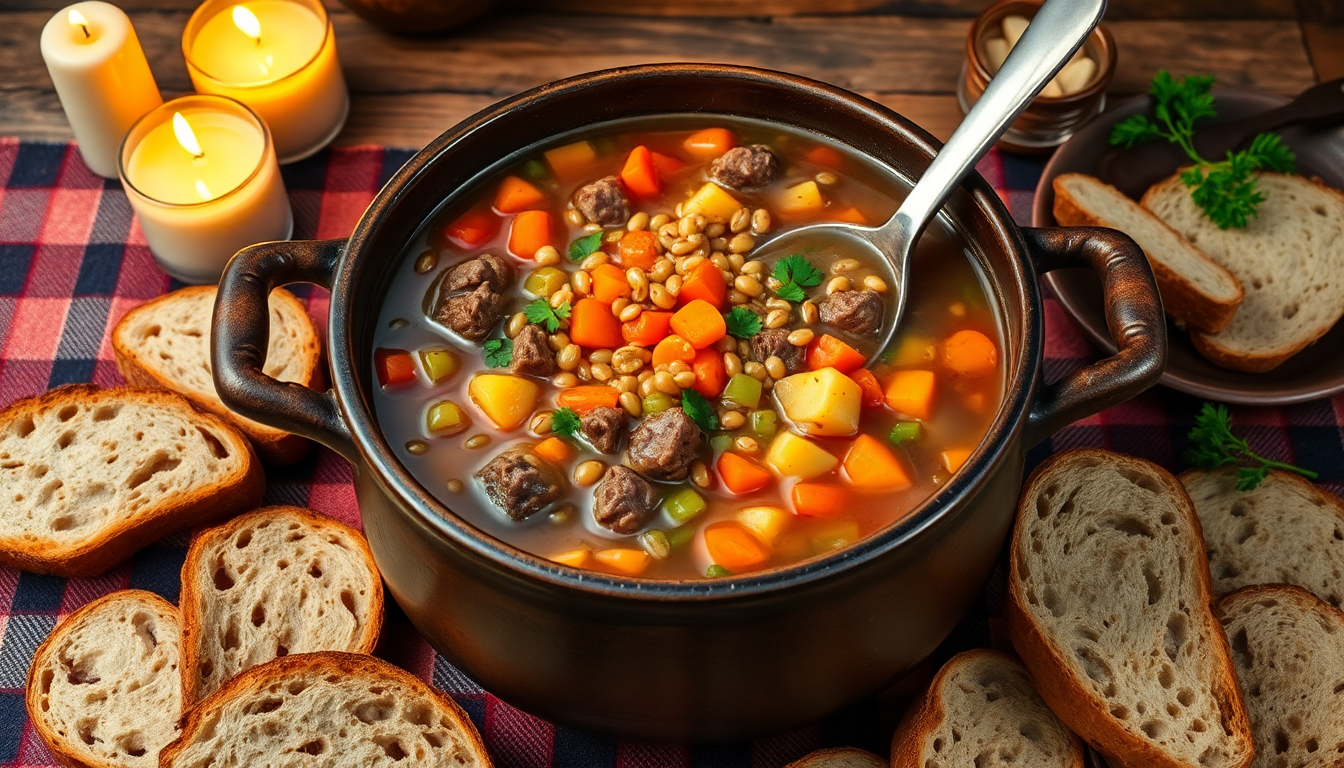
Slow cooking is an essential technique when preparing beef and barley soup, as it allows the rich flavors of the ingredients to meld beautifully over time. This method is perfect for creating a hearty and delicious soup that warms not just the stomach but also the soul.
One of the primary advantages of slow cooking is that it deepens the flavors, allowing each ingredient to shine. As the beef simmers, its natural juices combine with the broth and barley, creating a savory base that's hard to resist. The slow cooking process also tenderizes the meat, resulting in a fork-tender texture that enhances the overall experience of enjoying your beef and barley soup.
Here are some key benefits of slow cooking:
- Enhanced Flavor Development: A longer cooking time allows spices and herbs to release their essential oils, resulting in a more robust taste.
- Improved Texture: Slow cooking ensures that the beef becomes tender and the barley absorbs flavors, creating a harmonious dish.
- Convenience: You can set your slow cooker and then go about your day while it does the work, making it ideal for busy lifestyles.
To achieve the best results with your beef and barley soup, consider following these simple steps:
- Sear the Beef: Start by browning the beef in a pan to lock in its juices and develop a rich crust. You can learn more about this technique in our mouthwatering braised beef short ribs recipe.
- Layer Ingredients: Add the vegetables, barley, and broth in layers to ensure even cooking and flavor distribution. This is also applicable to our ultimate slow cooker beef stew recipe.
- Cook Low and Slow: Set your slow cooker on low for several hours, allowing the ingredients to meld without rushing the process. For more slow cooking inspiration, check out our delicious ground beef crockpot recipes.
By embracing slow cooking, you’ll transform your beef and barley soup from a simple meal into a comforting, flavorful experience worth savoring. For a deeper understanding of this culinary method, you can refer to the Slow cooking and learn about its history and techniques. Additionally, if you're curious about the benefits of barley, check out the article on Barley.
Secret #4: Using Homemade Broth
When it comes to making a delicious beef and barley soup, the choice between homemade and store-bought broth can significantly impact the overall flavor. Homemade broth offers a depth of flavor and richness that is often lacking in most commercial options. Here’s why making your own broth can elevate your beef and barley soup:
-
Fresh Ingredients: Homemade broth uses fresh, high-quality ingredients, allowing you to control what goes into your soup. This helps extract essential flavors from the bones, meat, and vegetables, making it similar to the mouthwatering braised beef short ribs recipe. For more information on the importance of using fresh ingredients, check out the cooking basics on Wikipedia.
-
Customization: With homemade broth, you can tailor the seasoning to your taste preferences. Adjust salt levels and add herbs or spices to enhance the flavor profile of your beef and barley soup, just like adding a kick to the irresistible spicy Thai coconut shrimp soup. Learn more about flavor adjustments in cooking through this culinary terminology.
-
Nutritional Benefits: Making broth at home allows you to extract beneficial minerals and nutrients from bones, making your soup not only tastier but also richer in health benefits, similar to the nutrition found in delicious healthy high protein breakfast recipes.
-
No Preservatives: Unlike many store-bought broths that may contain preservatives and artificial flavors, homemade broth is pure and wholesome, contributing to a more authentic taste in your soup, much like the authentic flavor in homemade spicy tomato sauce.
-
Cost-Effective: While buying pre-packaged broth can be convenient, making your own can be more economical in the long run, especially when using leftover vegetable scraps or bones from previous meals.
In summary, using homemade broth is a game-changer for your beef and barley soup. Not only does it enhance the flavor, but it also provides a healthier and more personalized cooking experience. Investing time into making your own broth is well worth it for a soup that stands out with its rich, comforting taste.
Secret #5: Seasoning Techniques

When it comes to cooking a delightful beef and barley soup, mastering seasoning techniques can elevate the dish from good to exceptional. The art of seasoning is about layering flavors, ensuring that every spoonful of soup is bursting with taste. Here are some effective strategies to enhance your beef and barley soup through seasoning:
-
Start with Aromatics: Begin by sautéing onions, carrots, and celery in your pot. This foundational step not only adds depth to your soup but also builds a savory base that complements the beef. For unexpected flavors, check out Delicious Beef Stew Recipes.
-
Layer Spices: Introduce spices like bay leaves, thyme, and pepper at different stages of cooking. Add dried herbs at the beginning to allow their flavors to meld into the broth, while fresh herbs should be added toward the end to retain their vibrant taste. You can also explore 15 Irresistible Beef Stir-Fry Recipes for more seasoning inspiration. For more information on herbs and spices, visit Culinary Herb.
-
Use Salt Wisely: Salting your beef before browning it enhances its flavor. Additionally, adjust salt levels as your soup simmers, tasting frequently to find the perfect balance. Remember, you can always add more salt, but you can't take it away! Consider this when making Ultimate Slow Cooker Beef Stew Recipe.
-
Incorporate Umami: For an extra flavor boost, consider adding ingredients rich in umami, such as Worcestershire sauce or soy sauce. A dash of these can transform your beef and barley soup into a gourmet experience. If you're looking for more umami-rich dishes, try Mouthwatering Braised Beef Short Ribs Recipe. To understand more about umami, check out the Umami page on Wikipedia.
-
Finish with Freshness: Brighten your soup just before serving with a sprinkle of chopped parsley or a squeeze of lemon juice. This adds a refreshing contrast to the rich, hearty flavors of the soup.
By employing these seasoning techniques, you will ensure that your beef and barley soup is not only delicious but also well-balanced and memorable. Happy cooking!
Putting It All Together: A Hearty Beef and Barley Soup Recipe
To create a truly memorable beef and barley soup, it's essential to follow a tried-and-true recipe that incorporates the five secrets to elevate this comforting dish. Below is a step-by-step guide that ensures you harness all the flavors and textures that make beef and barley soup irresistible.
Ingredients:
- 1 pound beef stew meat, cut into 1-inch pieces
- 1 tablespoon olive oil
- 1 medium onion, chopped
- 2 cloves garlic, minced
- 3 carrots, sliced
- 2 celery stalks, sliced
- 1 cup pearl barley, rinsed
- 6 cups beef broth
- 1 tablespoon Worcestershire sauce
- 1 teaspoon dried thyme
- 2 bay leaves
- Salt and pepper to taste
- Fresh parsley, chopped (for garnish)
Step-by-Step Instructions:
-
Brown the Beef: In a large pot or Dutch oven, heat the olive oil over medium-high heat. Add the beef stew meat and sauté until browned on all sides, about 5-7 minutes. This step locks in flavor, enhancing the overall taste of your beef and barley soup.
-
Sauté the Aromatics: Add the chopped onion and minced garlic to the pot. Cook until the onion is translucent, around 3-4 minutes. These base flavors are crucial in building the depth of your soup.
-
Add Vegetables: Stir in the sliced carrots and celery, cooking for another 5 minutes. The combination of these vegetables offers a wonderful sweetness and texture to the soup.
-
Combine Ingredients: Add the rinsed pearl barley, beef broth, Worcestershire sauce, dried thyme, and bay leaves. Stir everything together and bring the mixture to a gentle boil.
-
Simmer: Reduce the heat to low and cover the pot. Let the soup simmer for about 1.5 to 2 hours, or until the beef is tender and the barley is cooked through. This slow-cooking process melds all the flavors together, ensuring a hearty beef and barley soup.
-
Season: Remove the bay leaves and season the soup with salt and pepper to taste. Adjust the seasoning as desired. This final touch will balance the flavors perfectly.
-
Serve and Garnish: Ladle the soup into bowls and top with freshly chopped parsley for a burst of color and freshness.
Tips for an Ultimate Experience:
- Quality Ingredients: Choose good-quality beef and fresh vegetables for the best flavor.
- Make it Ahead: Beef and barley soup tastes even better the next day, making it an excellent dish for meal prep.
- Customization: Feel free to add other vegetables like potatoes or peas to the mix for variety.
By following this recipe, you'll create a delicious beef and barley soup that not only satisfies your cravings but also provides a warm, comforting experience on any chilly day. Enjoy!
For more delicious soup recipes, check out these links:
- Perfect Beef Stew Recipes
- Easy Crockpot Ground Beef Recipes
- Hearty Beef Barley Soup Recipe
- Barley
- Beef
Tips for Customizing Your Soup
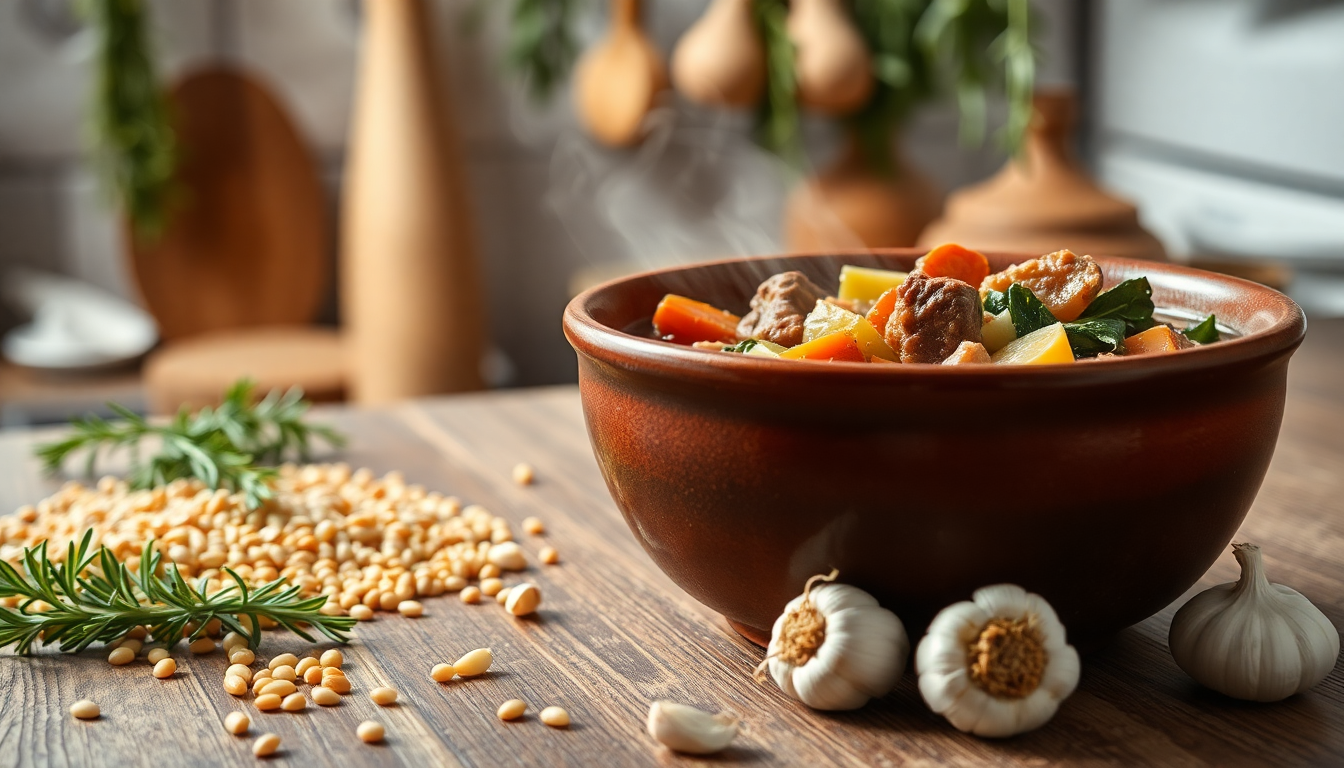
"When it comes to making the perfect beef and barley soup, customization is key to ensuring it meets your personal tastes and dietary needs. Here are some simple tips to tailor this hearty dish:
-
Choice of Meat: While traditional beef and barley soup typically uses chuck or stew beef, feel free to experiment with leaner cuts like sirloin or even ground beef. For a healthier version, consider substituting beef with turkey or plant-based options such as lentils. You can explore a variety of delicious ground beef recipes here and learn more about beef cuts that might suit your preferences.
-
Vegetable Varieties: Enhance the flavor and nutrition of your beef and barley soup by adding a variety of vegetables. Carrots, celery, and onions are classic choices, but you can also explore options like:
- Mushrooms
- Spinach or kale
- Sweet potatoes
- Peppers
-
Seasoning Options: Adjusting the spices can drastically change the taste profile of your soup. Incorporate herbs such as thyme and rosemary for a rustic feel, or add a pinch of red pepper flakes for some heat. Don't hesitate to try:
- Bay leaves
- Italian seasoning
- Garlic powder
-
Barley Alternatives: If you want to switch it up, consider using other grains like quinoa, brown rice, or even farro instead of barley. Each grain brings unique flavors and textures to the soup. For instance, check out these wholesome healthy grains recipes and learn more about barley for additional insights.
-
Broth Choices: For a richer flavor, use beef stock instead of water. If you prefer a lighter option, vegetable or chicken broth works well too. Remember, the broth you choose influences the overall taste of your beef and barley soup.
-
Dietary Adjustments: If you're looking for a gluten-free option, replace barley with gluten-free grains or omit it entirely, creating a delicious beef soup. Additionally, substituting coconut aminos for soy sauce can make it suitable for those following specific diets.
By applying these customization tips, you can create a beef and barley soup that is truly your own, perfectly catering to your personal tastes and dietary preferences. Enjoy experimenting with flavors and ingredients to make this comforting dish a reflection of your culinary style! You can learn more about making delicious soups here."
Frequently Asked Questions
Storing leftover beef and barley soup correctly can help retain its delicious flavor and texture. Here are some tips for optimal storage:
-
Cool Down: Allow the beef and barley soup to cool to room temperature before storing. This helps prevent condensation and avoids raising the temperature inside your refrigerator.
-
Use Airtight Containers: Transfer the soup into airtight containers or freezer-safe bags. This will help to prevent freezer burn and maintain freshness.
-
Refrigerate: Store the soup in the refrigerator if you plan to eat it within the next 3-4 days. Make sure it’s sealed tightly.
-
Freeze for Longer Storage: For longer-lasting storage, place the soup in the freezer. It can last up to three months when properly sealed. When ready to eat, thaw in the refrigerator overnight or use the microwave for a quick defrost.
-
Reheat Safely: When reheating beef and barley soup, ensure it reaches an internal temperature of at least 165°F (74°C) to ensure it’s safe to eat. For more information on food safety, check out the Food Safety page on Wikipedia.
By following these storage tips, you can enjoy your beef and barley soup for days to come without losing its flavor or quality! For more delicious recipes, check out our Ultimate Hearty Chicken Noodle Soup Recipe and Hearty Beef Barley Soup Recipe. If you're interested in different types of soups, take a look at our 10 Delicious Instant Pot Ground Beef Recipes for Quick Meals or Delicious High Protein Soup Recipes.
Conclusion
In conclusion, mastering the art of beef and barley soup isn't just about following a recipe—it's about embracing creativity in your kitchen. We’ve explored five secrets that elevate your soup from simple to sensational:
- Quality Ingredients: Start with fresh, high-quality beef and barley for the best flavor. Check out our Mouthwatering Braised Beef Short Ribs Recipe for tips on selecting the right cuts.
- Layered Flavors: Sauté vegetables and seasonings before adding broth to enhance depth. For a great base, consider the Ultimate Classic Bechamel Sauce Recipe.
- Slow Cooking: Allow your soup to simmer, letting the beef become tender and the barley perfectly cooked. If you enjoy slow cooking, explore our Ultimate Guide to Best Slow Cooked Beef Stew. You can also learn more about Slow Cooking as a technique to enhance flavors.
- Season to Taste: Adjust your seasonings throughout the cooking process for a well-balanced dish. Experiment with Irresistible Cajun Alfredo Sauce Recipe for unique flavor profiles. To dive deeper into flavoring techniques, take a look at Seasoning.
- Garnishing: Add fresh herbs or a sprinkle of cheese before serving to add a burst of flavor. For a delicious garnish, try making our Irresistible Spicy Tomato Sauce.
Now it's your turn to experiment! Don’t hesitate to customize your beef and barley soup by adding your favorite vegetables, spices, or even alternative grains. Each variation can lead to a delightful new twist, making your soup uniquely yours. Enjoy this comforting dish, and happy cooking!

